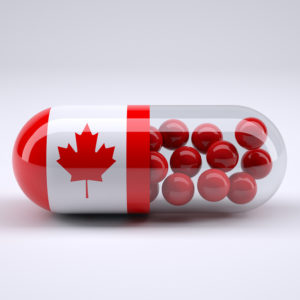Both sides of the aisle in American politics see lower drug prices in Canada and Europe and implore federal officials to force U.S. prices downward. STAT news says a month’s worth of cholesterol medication Crestor costs $40 in Canada, versus $300 in America. President Trump sees “global freeloading.” Senator Bernie Sanders says manufacturers hold us “hostage.”
Both sides’ proposed solutions would likely fail.
The Trump administration suggests
Two big differences: First, steel prices mostly reflect recent expenditures on wages, ore, energy, etc. Drug prices primarily reflect long-ago expenditures on research and development, plus Food and Drug Administration approval — a process that lasts over a decade and costs over $2.5 billion. After those frontloaded expenditures, manufacturing costs can be surprisingly small. Second, Japanese and American steel companies can be separate entities; American Crestor and Canadian Crestor are both produced by AstraZeneca.
These differences create radically different market conditions.
Imagine some hypothetical DrugX, manufactured by DrugXCo. A month of DrugX costs $2,000 — reflecting $200 for wages, energy, chemicals and other recent costs, plus $1,800 to repay loans that financed up-front costs 15 years ago. DrugXCo must recoup all $2,000 or the investment fails. In the gigantic U.S. market, a $2,000 price fills that need.
Canadians buy DrugX at prices determined by negotiations between provincial governments and DrugXCo-Canada. If provincial governments refuse to pay more than $500, DrugXCo likely says, “Fine.” American sales cover manufacturing and up-front costs. In Canada, $500 more than covers the $200 in current manufacturing costs. If DrugXCo-Canada refuses the $500 price, Canadian governments may simply refuse to purchase DrugX, preferring that Canadians go without. For DrugXCo, some Canadian operating profit is better than none. Canada is a small market, so protracted negotiations and public squabbles aren’t worth the trouble.
But if the U.S. government allows Canadian imports, this logic vanishes. DrugXCo can’t allow the American price to plunge to $500, or its investment fails. Despite popular perception, pharmaceutical company profit margins aren’t particularly large vis-à-vis other industries. Force revenues down, and you’ll get fewer innovative drugs. With imports allowed, if Canada refuses to pay more than $500, DrugXCo says, “Bye-bye. Go invent your own drug.” In the end, America’s price will likely hover at around $2,000. Canada eventually agrees to the $2,000 price, or Canadians do without DrugX.
Superficially, importing drugs from Canada sounds like free trade, but it’s not. It’s really a seizure of drug companies’ control over their intellectual property — the temporary monopoly pricing allowed by our patent system in exchange for creating new drugs. By allowing Canadian imports in, the federal U.S. government imposes Canadian price controls on the American market, thereby devaluing the company’s patent.
Another Trump proposal would limit what Medicare pays for certain drugs to a weighted average of foreign-country prices — the “International Price Index.” This amplifies the problem by importing price controls from multiple countries, rather than just from Canada. Again, DrugXCo’s likely response would be to raise prices in those foreign countries, not lower prices in America.
On the other side of the aisle, Senator Sanders sees Canadian governments imposing price controls and wishes to empower turbo-charged Medicare negotiators to do likewise. But to reiterate, Canada’s low prices don’t reflect the awesome power of government bargaining. They reflect Canada’s small market and price controls that would kill off new drug development if allowed to leach into America.
Medicare is forbidden to negotiate directly with drug companies for good reason, summed up by the term “regulatory capture.” In short, a Medicare negotiator is likely bargaining with a prospective future employer. If the Medicare negotiator awards a high price to DrugXCo today, he’ll be remembered fondly when his resume and job application arrive at the company a year from now.
There are, indeed, policies that could reduce costs, but those mostly involve the supply-side of the market — reducing the cost of developing new drugs. Most importantly, the FDA approval process is needlessly expansive, expensive and unpredictable, adding costs and uncertainty to new drug development and diffusion. Reforming the FDA is a topic for another day. Unfortunately, it’s barely a topic in present-day political debate.

